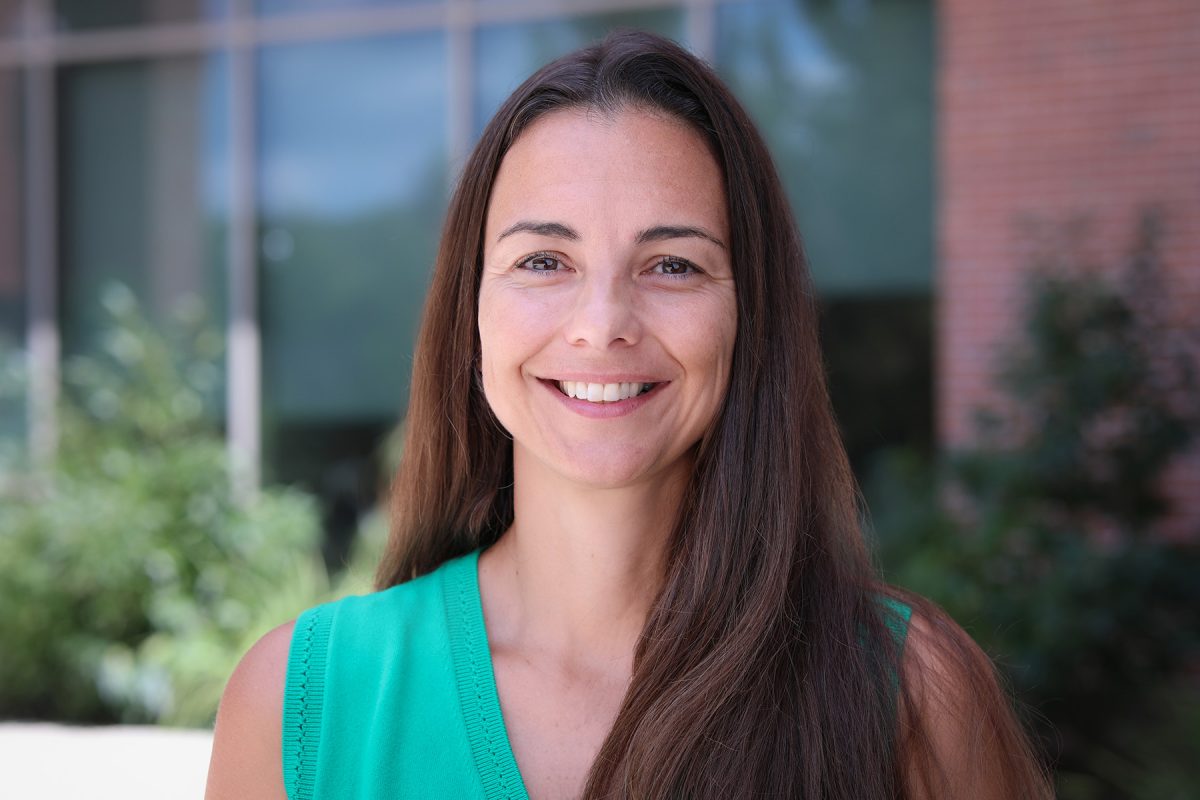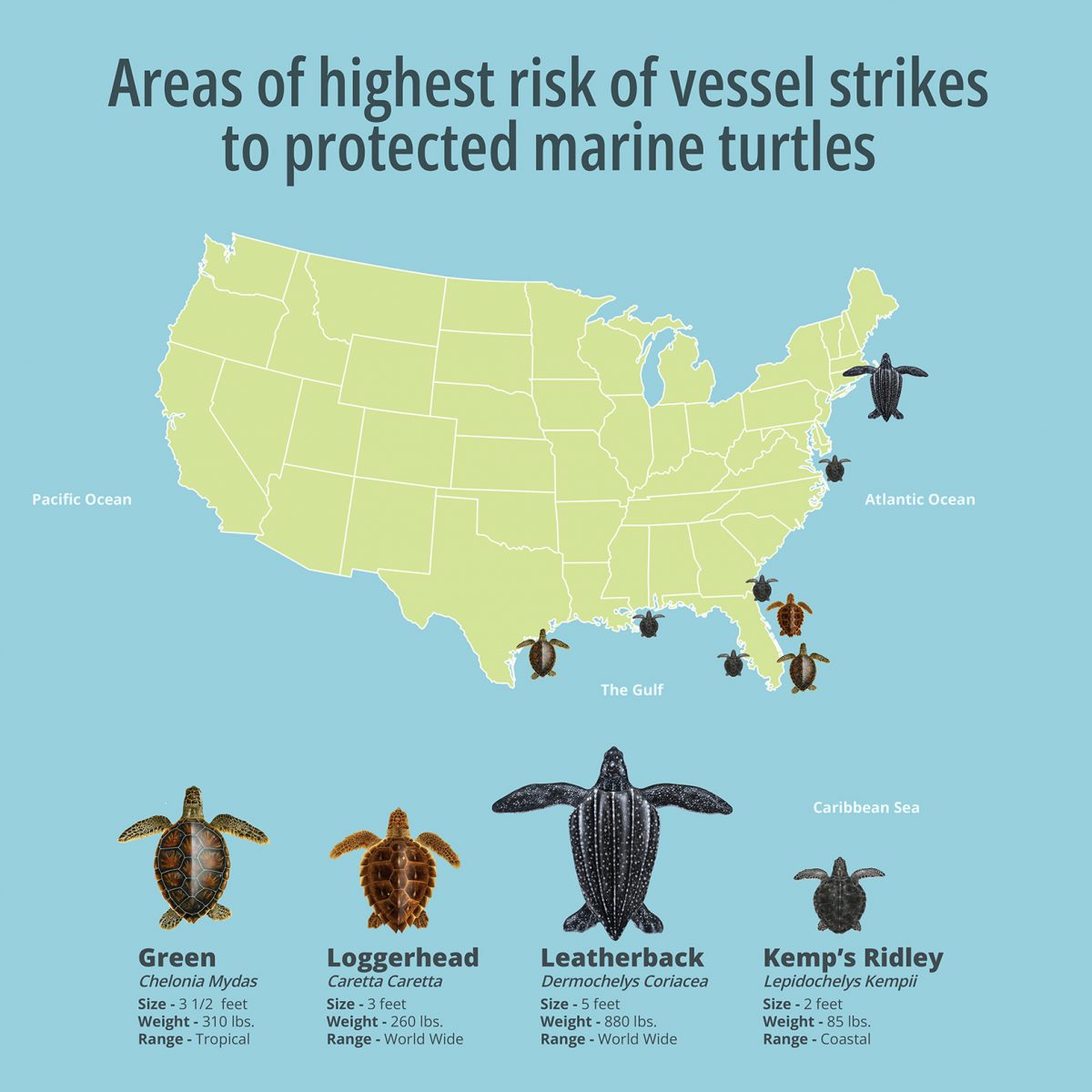
A Florida State University marine biologist is enhancing conservation efforts by identifying the areas on the U.S. Atlantic and Gulf coasts that expose protected marine turtles to the highest risk of being struck by vessels.
Professor of Oceanography and Environmental Science Mariana Fuentes discovered that one quarter of all stranded turtles found in the Gulf and western Atlantic Ocean are vessel-strike victims. The study findings will better inform marine turtle conservation and management for the four protected species that regularly nest and forage in the regions: loggerhead, green, Kemp’s ridley, and leatherback turtles.
“I’m inspired by the opportunity to conduct research that directly informs conservation strategies and evidence-based policy for threatened species, which is the mission of my lab, the Marine Turtle Research, Ecology and Conservation Group,” said Fuentes, the study’s principal investigator. “By identifying regions where vessel strikes are a major threat, this work guides targeted mitigation efforts.”
These findings were published in September in the journal Biological Conservation.
Using data collected from 2010 to 2022, researchers found that most vessel-strike injuries happen to green turtles in Florida and Texas, as well as loggerhead turtles in Florida. Kemp’s ridley turtles are the world’s smallest and scientists predominantly observed these turtles with vessel-strike injuries in Florida, but clusters of stranding were also seen in Virginia, Georgia and Mississippi. The most vessel-struck leatherback turtles, the largest of the world’s sea turtles and a highly migratory species, were found stranded primarily in Massachusetts.
This new research is crucial for informing conservation efforts in these areas, allowing the stakeholders to make research-backed decisions and prioritize specific locations for future studies. Protecting sea turtles is essential not only for their persistence as a species but also for maintaining the stability and functioning of marine ecosystems.
“For example, green turtles graze on seagrass beds, maintaining a balance in the ecosystem to support a wide range of marine life,” Fuentes said. “By consuming jellyfish, leatherbacks help control their abundance, which can otherwise disrupt fish populations. Sea turtle nesting behavior also contributes to coastal ecosystems, as unhatched eggs and eggshells provide nutrients that enrich beach vegetation.”
Nearly all vessel-struck turtles in the study died from their injuries, challenging previous scientific speculation that most died from other causes and were struck by a vessel while floating.
One of the publication’s co-authors, Allen Foley, is a research administrator for the Fish and Wildlife Research Institute (FWRI), part of the Florida Fish and Wildlife Conservation Commission. An objective of FWRI is to identify and characterize sea turtle mortality factors, particularly human-related activities or behaviors that can harm or kill turtles such as boating, commercial fishing, polluting, dredging and developing coastal land.
“Dr. Fuentes has unique insights and perspectives due to her great deal of experience on a wide range of sea turtle research projects,” Foley said. “Vessel-strike injuries are the most commonly identified cause of death for Florida sea turtles, and I suspect this is the case elsewhere. Human activities and behaviors are often why species become threatened or endangered, and usually, the mitigation or adjustment of these activities has a great conservation benefit.”
While spearheading this research, Fuentes also co-authored “A Global Sea Turtle Climate Vulnerability Assessment,” published in September in Ecological Indicators. Collecting data from across the globe, this work quantified the vulnerability of sea turtles to climatic changes.
That work uncovered that turtles are most vulnerable to sea level rise and air temperature changes — heatwaves as well as cold snaps — in addition to ocean acidification and dissolved oxygen, which both occur as waters warm and absorb more carbon dioxide and less oxygen. As with Fuentes’ vessel-strike research, the purpose of this work is to support accurate, well-informed management decisions.
“It’s important to realize the natural world is complex and interconnected and removing any part could have far-reaching consequences,” Foley said. “Sea turtles are long-term components of our natural world, and their removal would no doubt have cascading effects. While species naturally come and go, the loss of sea turtles due to human-related activities or behaviors would be tragic.”
Fuentes’ vessel strike research was funded in part by the Florida Trustee Implementation Group, part of the Deepwater Horizon Natural Resource Damage Assessment.
To learn more about Fuentes’ work and research conducted in the Department of Earth, Ocean, and Atmospheric Science at FSU, visit eoas.fsu.edu.





